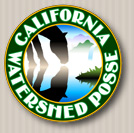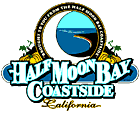

MROSD & SFPUC CEQA REVIEW
January 21, 2002
To: Joseph Naras, Watershed Resource Manager, SFPUC
Arthur B. Jensen, General Manager, Bay Area Water Users Association
Jerry Hill, President, Board of Supervisors, San Mateo County
Mike Nevin, Supervisors, San Mateo County
From: Oscar Braun, Executive Director, Half Moon Bay Coastside Foundation C.W. Posse
Re :January 22, 2002 SFPUC meeting Agenda item #11, discussion and possible action related to (Guided, Multi-Modal Access) Fifield/Cahill Ridge Trail. (Naras) Staff Recommendation: Adopt Alternative E for the proposed Fifield/Cahill Ridge Trail on the San Francisco Peninsula Watershed , including the required Findings and Mitigation Monitoring and Reporting Program with respect to the Final Environmental Impact Report (FEIR) for the Fifield/Cahill Ridge Trail Project.
Dear Mr. Naras,
On behalf of the Board of Directors of the Half Moon Bay Coastside Foundation, we are formally requesting that the SFPUC postpone for at least 90 days their decision to adopt a preferred public access trail alternative (agenda item #11) through the SF Peninsula Watershed lands via the Fifield/Cahill ridge route for the following reasons:
- Under the Brown Act, the public has the right of reasonable notice of SFPUC meetings and the agenda items scheduled for open public hearing. The SFPUC notice for the January 22, 2002 meeting is postmarked January 18, 2002 (Friday). Monday January 21, 2002 is a Federal holiday celebrating Martin Luther Kings birthday, ergo no U.S. mail deliveries. It is reasonable to believe that the vast majority of the public will not receive notice of the January 22 meeting until some time on or after January 22, 2002. The public has a right to participate in all SFPUC meetings.
- ``The foremost principle under CEQA is that the Legislature intended the act to be interpreted in such manner as to afford the fullest possible protection to the environment within the reasonable scope of the statutory language."
- ``It's purpose is to inform the public and its responsible officials of the environmental consequences of their decisions before they are made. Thus , the EIR protects not only the environment but also informed self-government."
- ``The core of an EIR is the mitigation and alternative sections. The Legislature has declared it the policy of the State to ``consider alternatives to proposed actions affecting the environment."
- ``The purpose of an EIR is ....to list ways in which the significant effects of such a project might be minimized; and to indicate alternatives to such a project."
- ``....the Legislature has decreed that local agencies shall be guided by the doctrine of feasibility. It is the policy of the state that public agencies should NOT approve projects as proposed if there are feasible alternatives ...``
- ``CEQA Guidelines, which state that EIR must describe a range of reasonable alternatives to a project, or to the location of a project, which could feasibly attain the basic objectives of the project, and evaluate the comparative merits of the alternatives."
- ``As the underscored language suggests, project alternatives typically fall into one of two categories; on-site alternatives, which generally consist of different uses of the land under consideration; and off-site alternatives, which usually involve similar uses at different locations."
- ``Each case must be evaluated on its facts, which in turn must be reviewed in light of statutory purpose. Informed by that purpose we here affirm the principle that an EIR for any project subject to CEQA review must consider a reasonable range of alternatives to the project or the location of the project which (1) offer substantial environmental advantage over the project proposal, and (2) may be ``feasibly accomplished in a successful manner" considering the economic, environmental, social and technological factors involved
CEQA REQUIRES A ``NO PROJECT & OFF-SITE ALTERNATIVES
1994 SF Watershed Management Plan Public Opinion Survey Report
- How Much Public Access to the Watersheds Should Be Allowed? 84% of the respondents declared that there should be about the same or less access than now into the watersheds.
- Opinions About Relationship Between Water Quality, Recreational Opportunities and Greater Public Access to the Watersheds. ``There are many other places in the Bay Area (ie MROSD & POST Open Space Preserves) for people like me to go for outdoor recreation: the Alameda and Peninsula watersheds are not needed for that purpose" 80% agreed with this statement, 51% of them strongly. Respondents somewhat more likely to disagree with this proposition; but even with this group, 63% agreed that watersheds are not needed for recreation.
- ``Allowing more people into the watersheds will harm the natural environment." 82% agreed
- ``Which goal of watershed management do you think is most important?" 97% declared that insure water quality, protect the natural environment and reduce costs to customer. Only 3% declared public access to the watershed as most important.
California State Auditor Report on SFPUC February 2000
The California State Auditor has concluded in their February 2000 report `` the commission has been slow to assess and upgrade its water delivery system to enable it to survive catastrophic events such as earthquakes, fires, or floods. The commission has also been slow to estimate the amount of water it will need to meet demand in the future and to seek additional sources of water. As a result, the nearly 2.4 million customers in the City and County of San Francisco, and in Alameda, San Mateo, and Santa Clara counties who rely on the commission for their drinking water are at greater risk of disruptions and water shortages in the event of a catastrophe or a drought." The State Auditor Report did not declare that the SFPUC has been slow to provide ``recreational" opportunities to the BAWUA or the 29 communities that are dependent on the SFPUC watershed for their clean and safe water. The Mid-Peninsula Open Space District, the Peninsula Open Space Trust, GGRNA, State and San Mateo County Parks & Recreation Departments provide reasonable and feasible public recreational trails alternative access that are adjoining the SFPUC watershed. CEQA requires the SFPUC to consider all OFF-Site alternatives that can fulfill the basic objectives of the Bay Area Trails Network.
September 11, 2001
Lastly, in light of the events of September 11, 2001, the Bay Area's drinking water supply is at greater risk now more than ever: From disruptions and shortages in the event of a wildland/urban interface (WUI) area wildfires, drought or arson/chemical/biological terrorist attack. The SFPUC and all Bay Area community elected officials should take immediate steps to reduce the risk of a catastrophic outage caused by a wildfire for more than 2.5 million regional water system users. For these reasons, the Half Moon Bay Coastside Foundation respectfully request a continuance of agenda item #11 of at least 90 days.
Sincerely,
Oscar Braun,
Executive Director
 |
|
the Half Moon Bay Coastside Foundation's |
|
California Watershed Posse |
|
YOUR MISSION | CRMP SERVICES | CWP PROJECTS | CWP LINKS | THE PEBBLE |
|
1589 Higgins Canyon Road Half Moon Bay, California. 94019 |
|
| |||||||||||||||||||||||||||||||||||||||||||||||||||||




